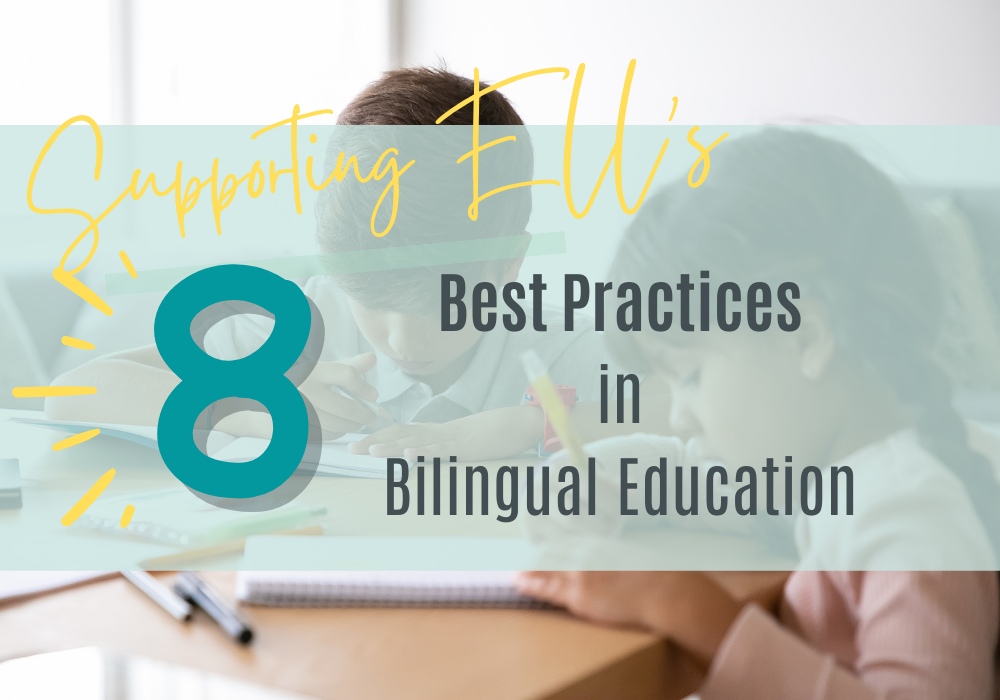You want to support all your students, but it can feel difficult to know what’s best for your multi/bilingual learners. There are plenty of myths out there, but what are the current best practices in bilingual education?
As you’ll read below I’ve been in that exact situation time and time again. “How do I best serve my bilingual students?” I’ve asked myself over and over. Through 13 years of experience, I’ve compiled what both research and my own experience suggests are best practices in Bilingual education. I’m sharing what I’ve learned below!
My journey as a bilingual teacher
My rough start
I began my journey as a bilingual teacher at the ripe age of twenty-one in a mixed 3 & 4 year old bilingual Pre-K Classroom within Chicago Public Schools. I was amidst the drink-from-the-fire-hydrant-type training via Teach for America and was the walking prototype of learning as you go. My interviews and a written/oral test had deemed me qualified to teach the 40 bright young minds in front of me, but wow. I had so much to learn.
Wow – I had so much to learn.
99.5% of our school’s students came from Spanish-speaking households and, as a Pre-K teacher, I was their first exposure to formalized school. My young, white self stood out like a zebra in a coffee shop in the community I was teaching in, my teaching team, and – certainly – in my classroom.
Teach for America was providing me with education about Early Childhood Education, but I was the only bilingual-assigned teacher in my cohort. I was learning how to properly teach phonics and phonemic/phonological awareness… in English, but was clueless about how to customize instruction for my bilingual littles.
Conflicting information
Just about everywhere I turned to learn more, I encountered conflicting information. My school officially used a Transitional Bilingual Language Model: one that promotes supporting students with the end goal of English proficiency. What I was reading about Cultural and Historically-Responsive teaching, however, highlighted the risks of an emphasis on English over students’ home language. Doing so underscores the already prevalent myth of English language Supremacy. I was drawn to the research I found about Dual Language Models, but a) I didn’t have enough proficient English speakers in my class and b) it turns out that my new teacher self couldn’t just change the entire language model of our school. When I talked with the preschool parents about their hopes and goals, I got even more mixed up. Some parents loved the idea of incorporating Spanish into our school day, others strongly preferred an English-only emphasis so that their young ones wouldn’t “fall behind.”
“What resulted was a pretty hodge-podge approach and constant second-guessing.”
What resulted was a pretty hodge-podge approach and constant second-guessing. The stakes felt really high: I could be a part of setting these 3 & 4 year olds up for their future in an English-based school, but I could also be a push into what would become the erasure of their language and culture.
Since those beginning days, I’ve had the privilege to engage with professional development that has formed me into a more confident bilingual teacher. This took (takes!) the form of independent study, mentorship under bilingual colleagues I admired, and more standard professional development. Through this, I’ve grown more sure in my practices and would love to share them with you!
Best Practices in Bilingual Education
This list is an amalgamation of my learning – please check out my reading list to see the education texts that have influenced me most!
Practice #1: Student Knowledge
Know your students! Yes, inquire about their likes, their interests, and their learning styles as you would with any group of learners, but more explicitly get to know their experience with language! Take the time to learn how comfortable they feel speaking, reading, writing and listening in each language. Inquire about who they use each language with and how they make those decisions.
Practice #2: Balanced Language Instruction & Translanguaging
The second best practice in bilingual education is to provide equitable instruction in both languages. Ensure that students have ample opportunities to develop proficiency in both their native language and the target language (e.g., English). Celebrate students using their full language repertoire to respond to & demonstrate their learning.
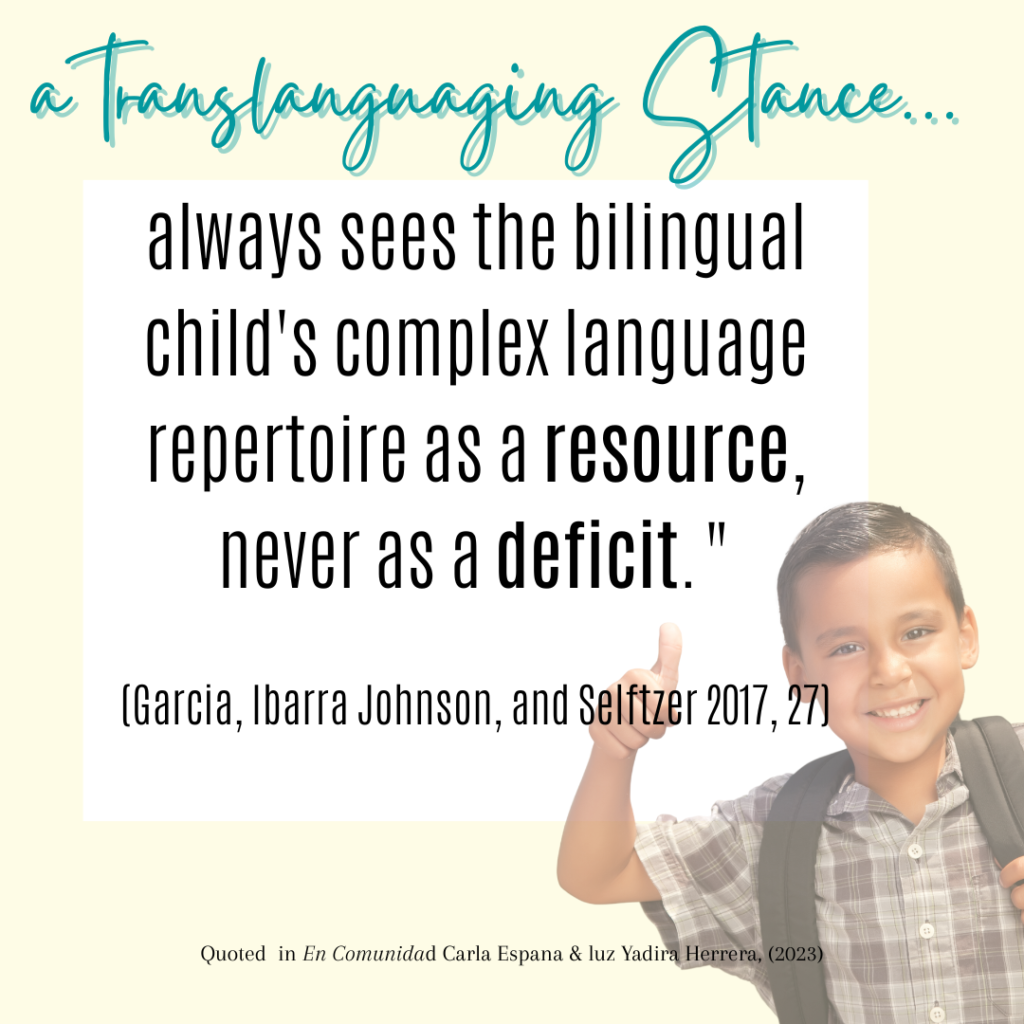
Practice #3: Culturally & Historically Responsive Teaching
Incorporate culturally relevant materials, resources, and teaching practices that value and affirm the cultural backgrounds and experiences of bilingual students. This promotes inclusivity and fosters a positive learning environment. Integrate multicultural perspectives and diverse cultural experiences into the curriculum. Celebrate cultural holidays, traditions, and literature to foster cross-cultural understanding and appreciation.
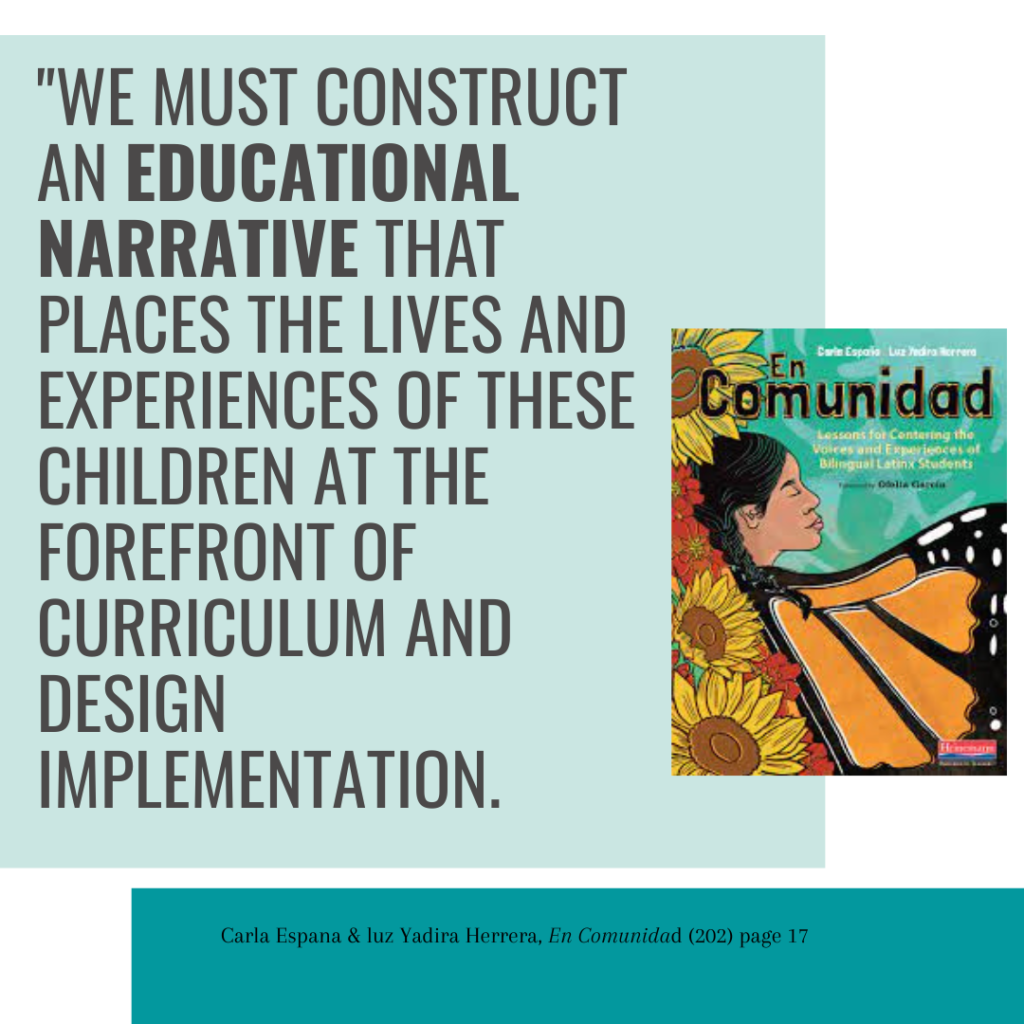
Practice #4: Explicit Vocabulary Development
The fourth of these best practices in bilingual education is to explicitly teach academic vocabulary and language structures necessary for success in content areas. Scaffold instruction to support students’ understanding and use of academic language in both languages through repeated oral and written practice. Check out my blog post on explicit vocabulary instruction here!
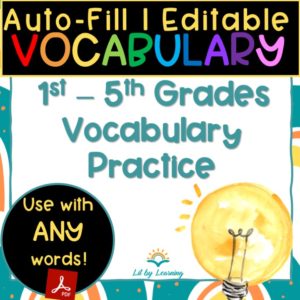
Practice #5: Collaborative, Community-Centered Learning
Encourage peer interactions and collaborative learning activities that promote both language development and social-emotional connections. This can include low-pressure, supported group work, cooperative learning, and interactive discussions. An emphasis on the collective, rather than individuals, also aligns with the culture of many Spanish-speaking cultures.
Practice #6: In-Class Language Support Strategies
Implement evidence-based language support strategies in your bilingual classroom! These include scaffolding, modeling, visual aids, and using real-life examples to facilitate comprehension and language production. Read more about how I customize resources for my bilingual students here!
Practice #7: Parent and Community Engagement
Foster strong partnerships with families and the community to support bilingual students’ langu
age development and academic success. Recognizing that parents are children’s first teachers, communicate regularly with caregivers in their preferred language and mode. Start out the school year by asking meaningful questions to get to know families & students. Also, don’t miss out on the chance to involve students’ communities in your decision-making processes. Finally, provide parent education opportunities & invite family in for learning celebrations and beyond!
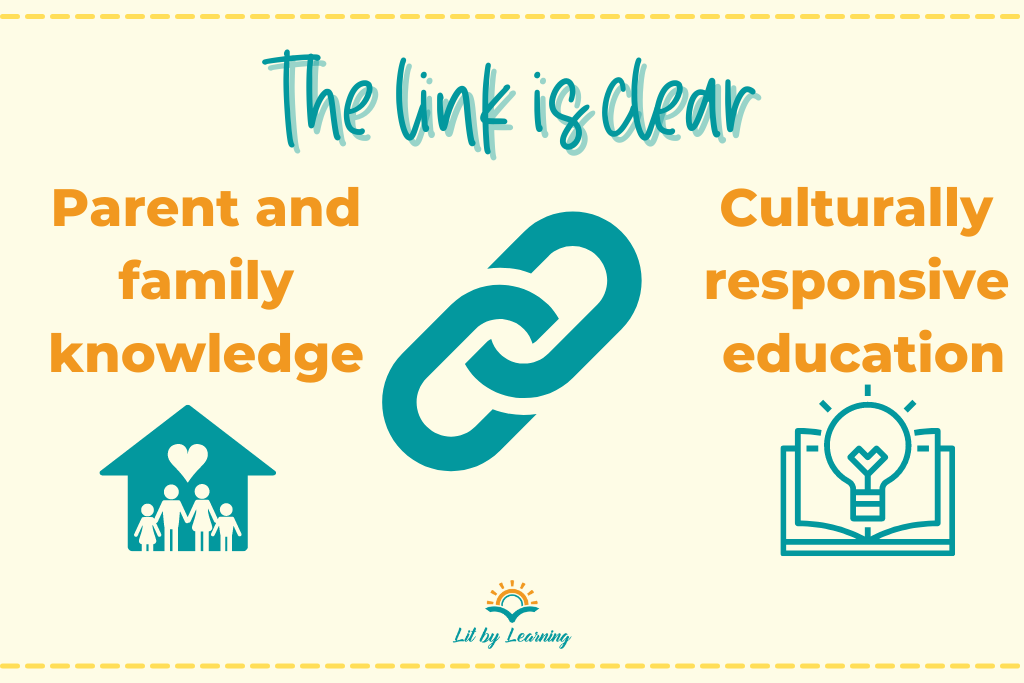
Practice #8: Ongoing, Curiosity-led Professional Development
Join me on this one! Pursue ongoing professional development opportunities to deepen your understanding of bilingual education, language acquisition theories, and best practices. Invite colleagues to join in your learning & to share out with others!
Read more about best practices in bilingual education!
- I highly recommend the brilliant book, En Comunidad: Lessons for Centering the Voices and Experiences of Bilingual Latinx Students by Carla España & Luz Yadira Herrera. This text builds on others’ work about Culturally and Historically Responsive Education with insights into strategies specific to bilingual Latinx students!
- For tips on ELL family engagement, please check out this article from one of my favorite bilingual education sites, Colorin Colorado.
- For read-aloud books celebrating Latinx culture, please check out my blog post here.

